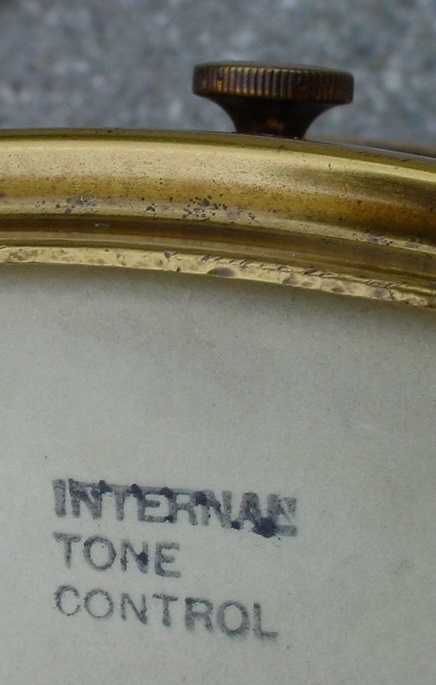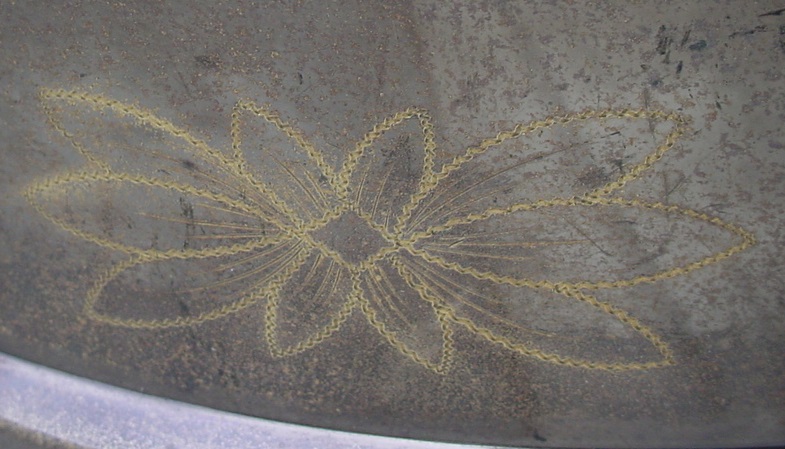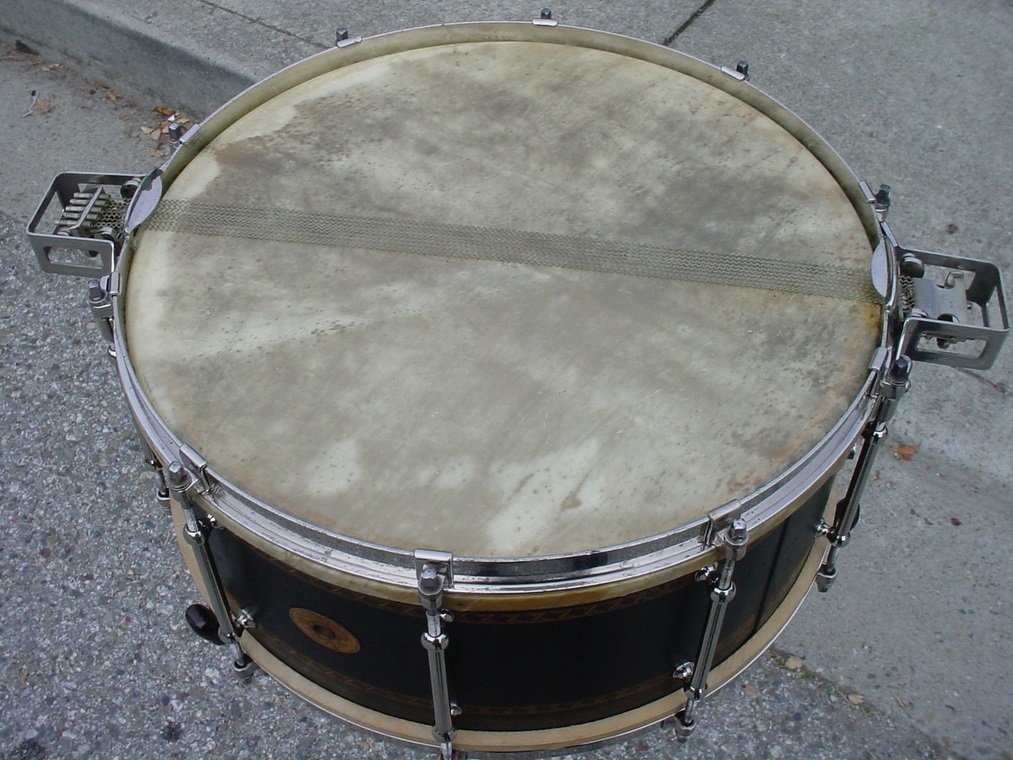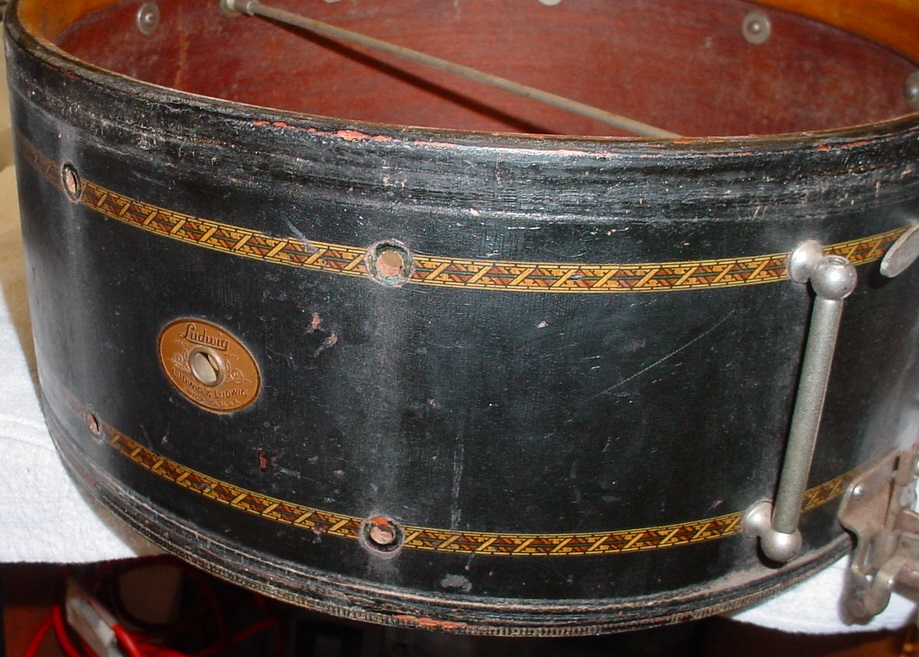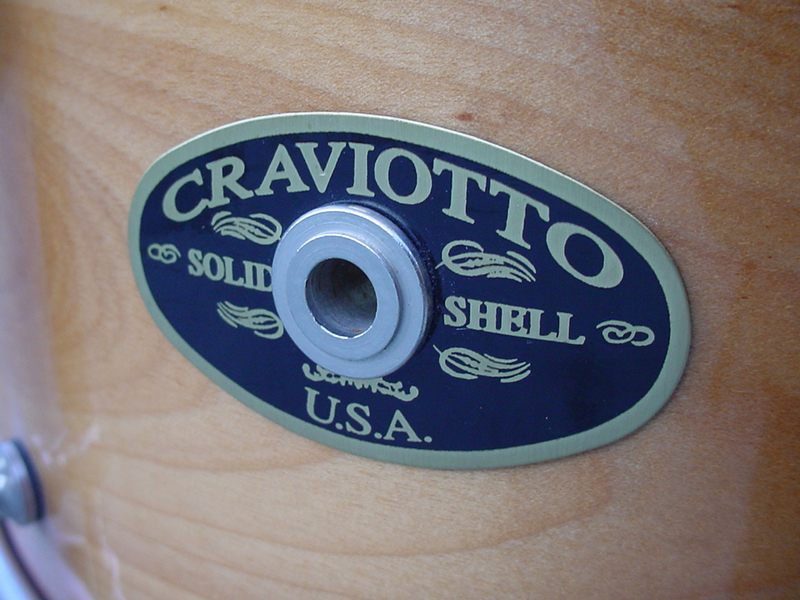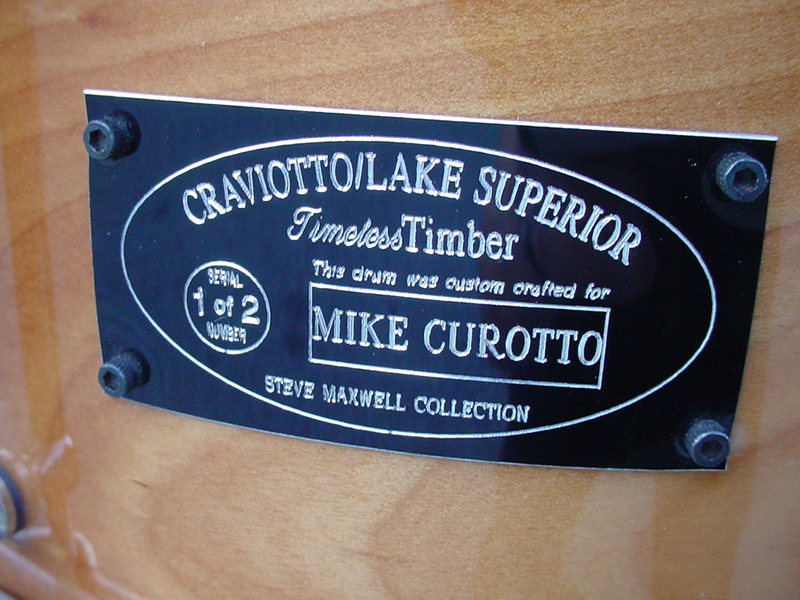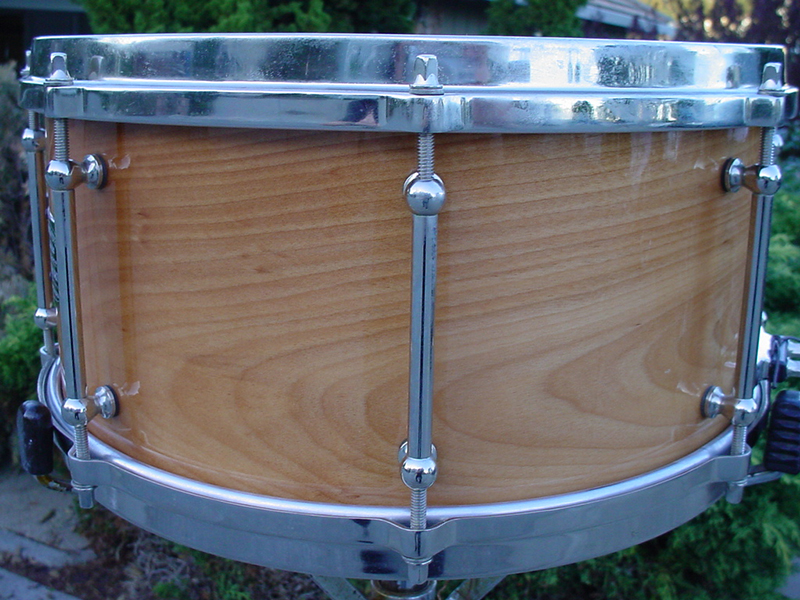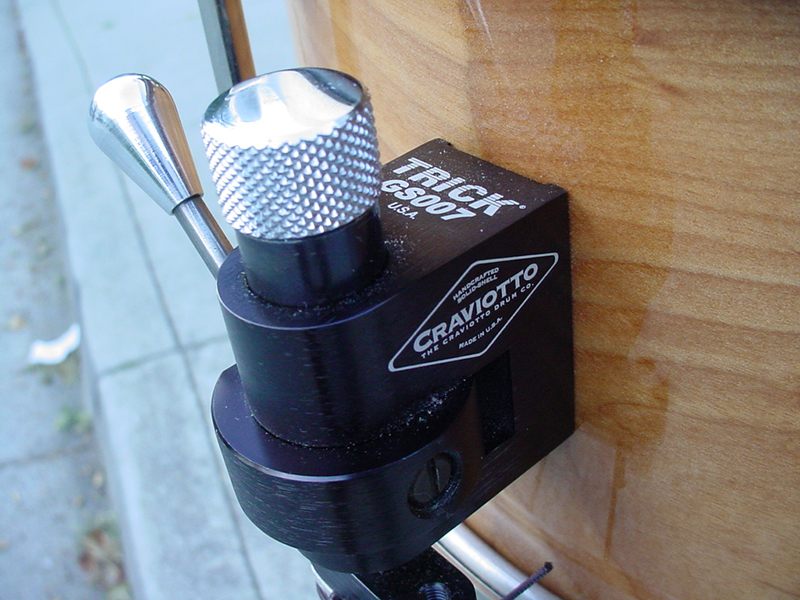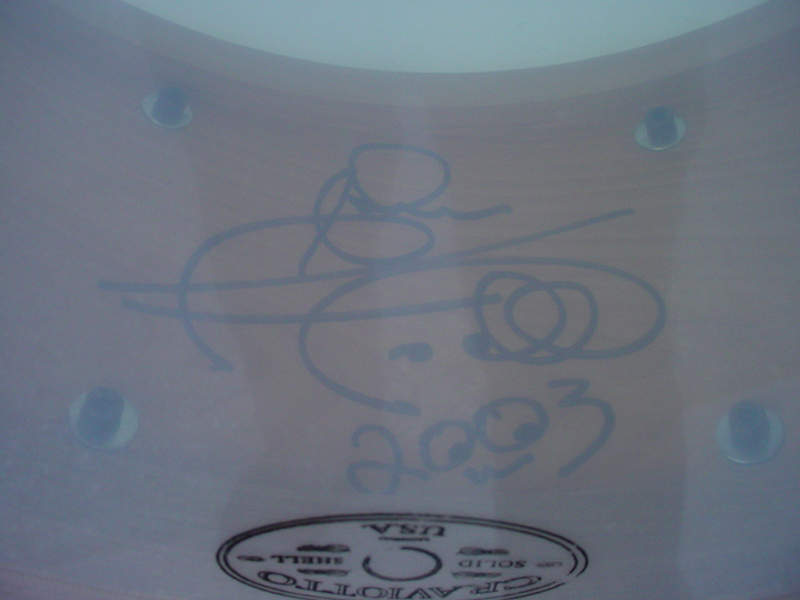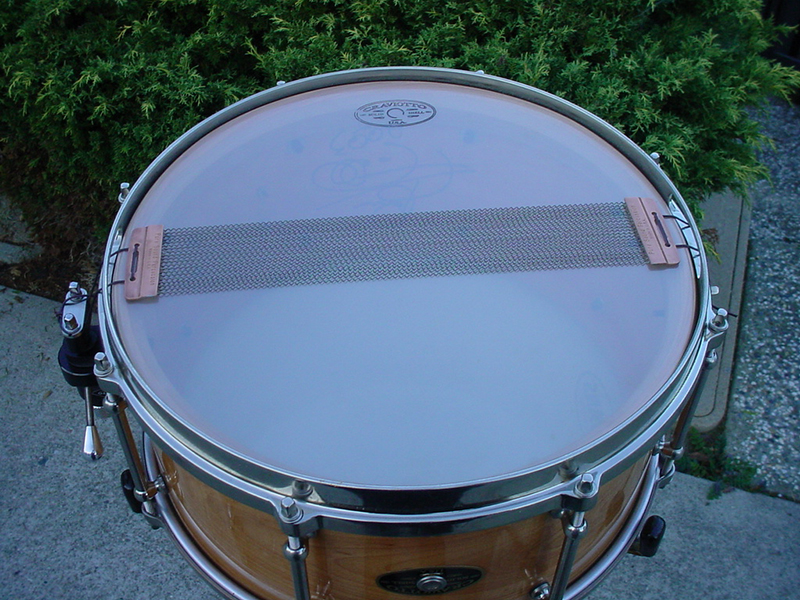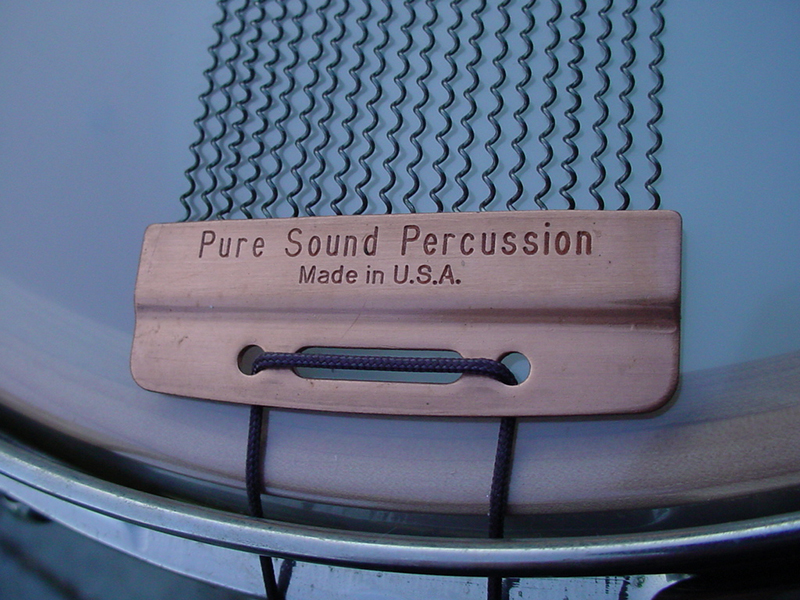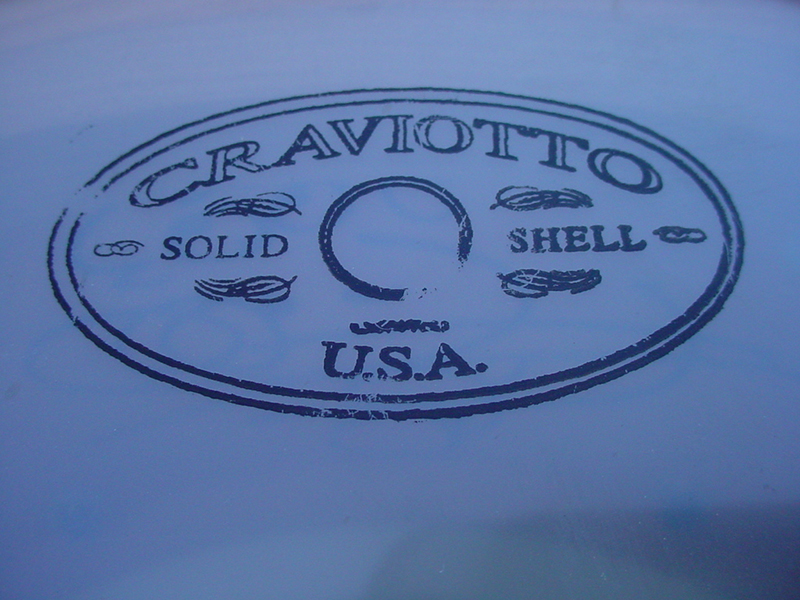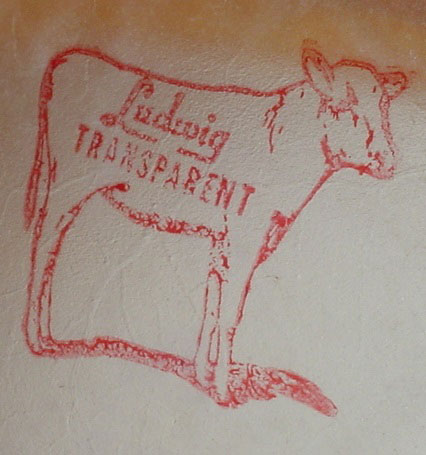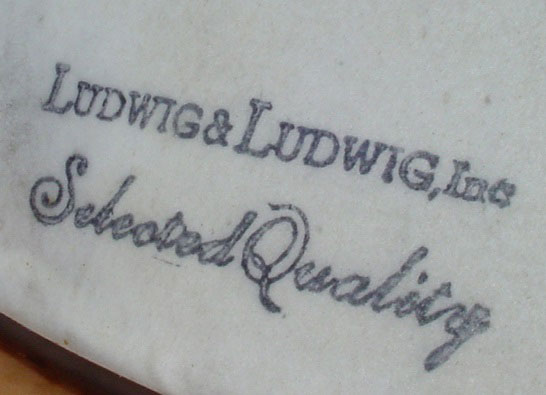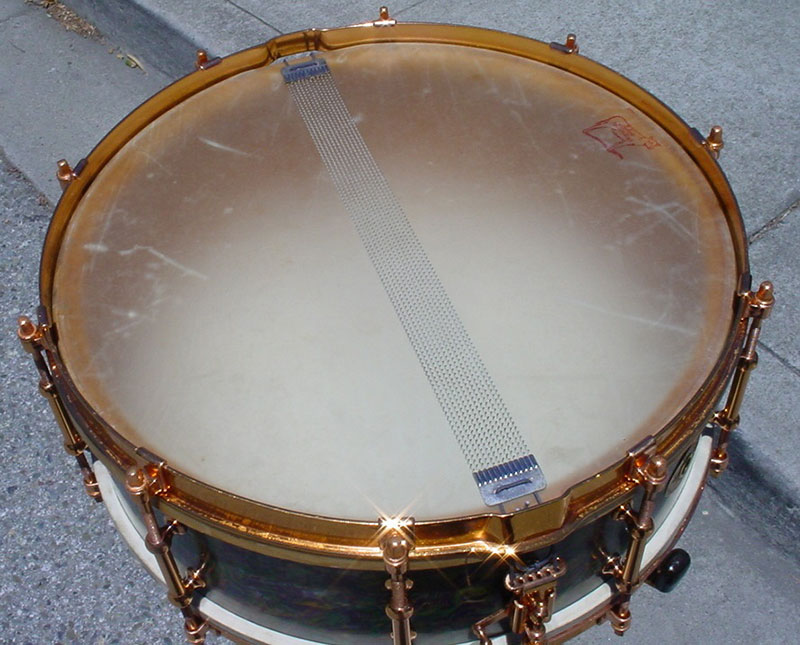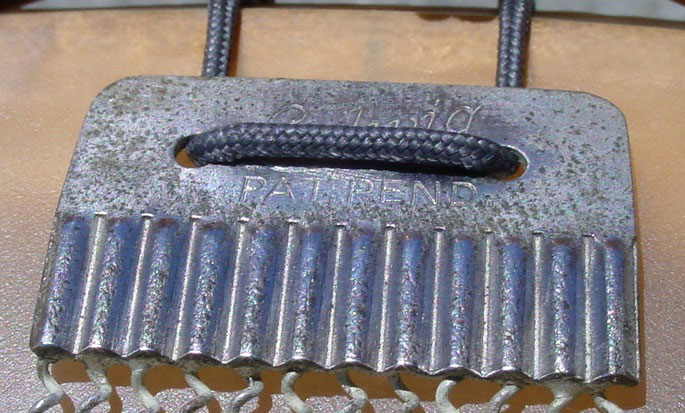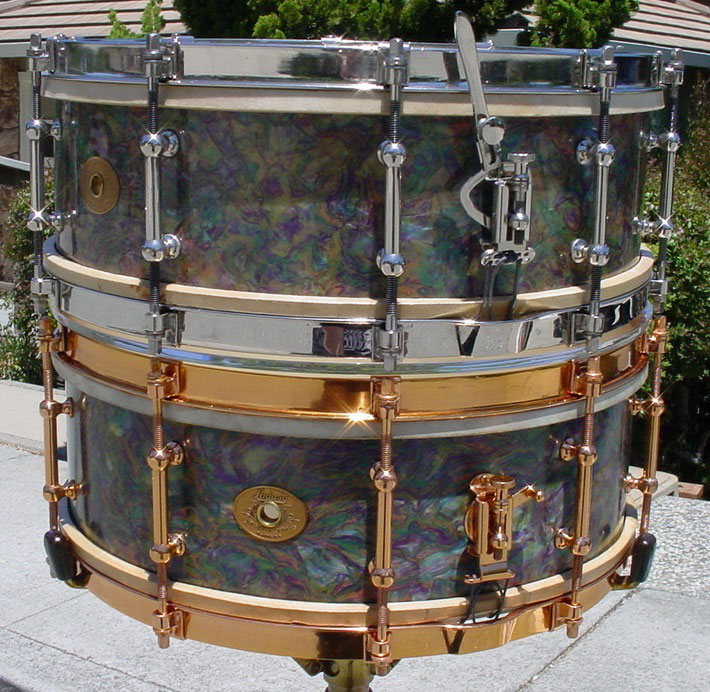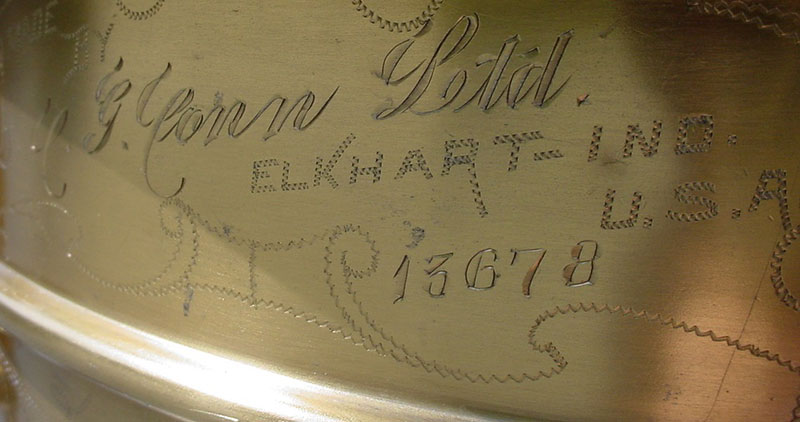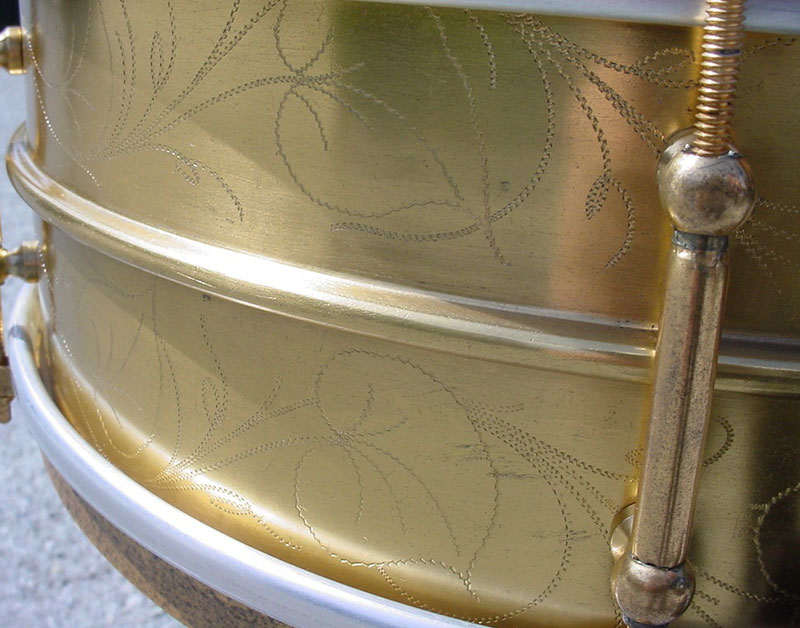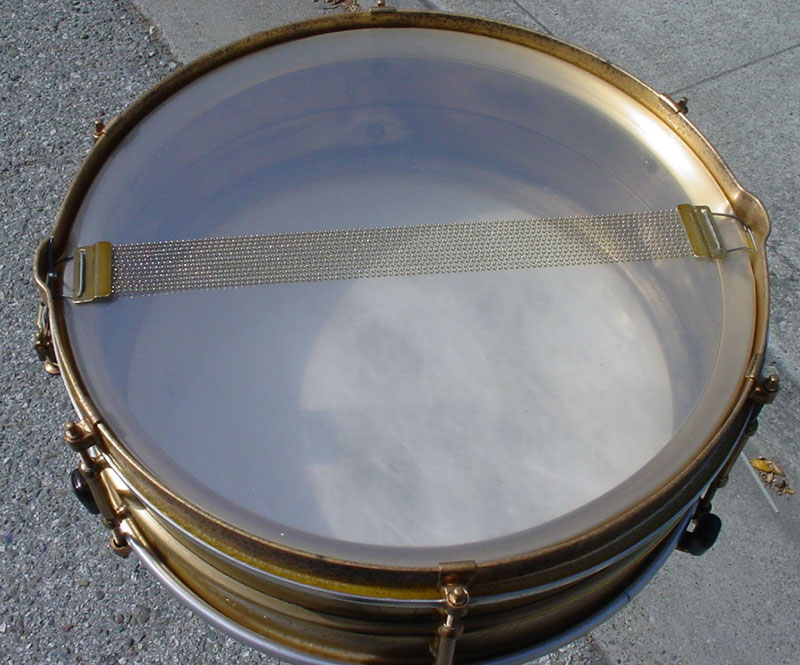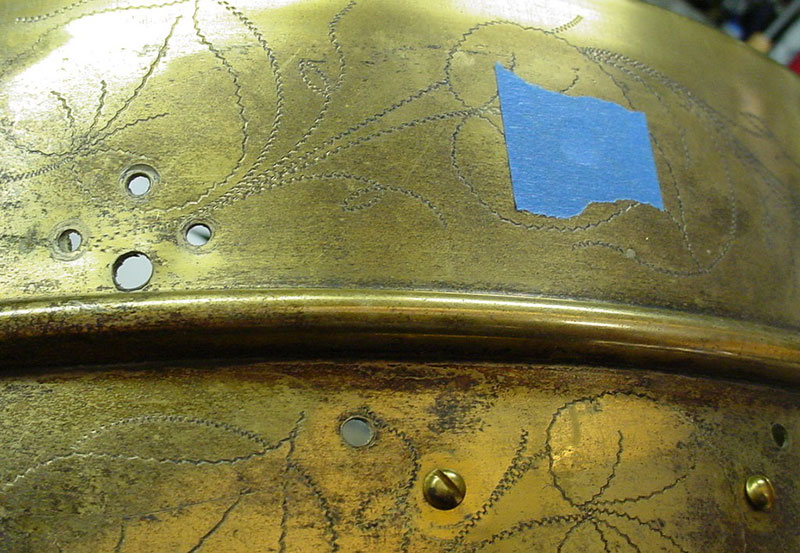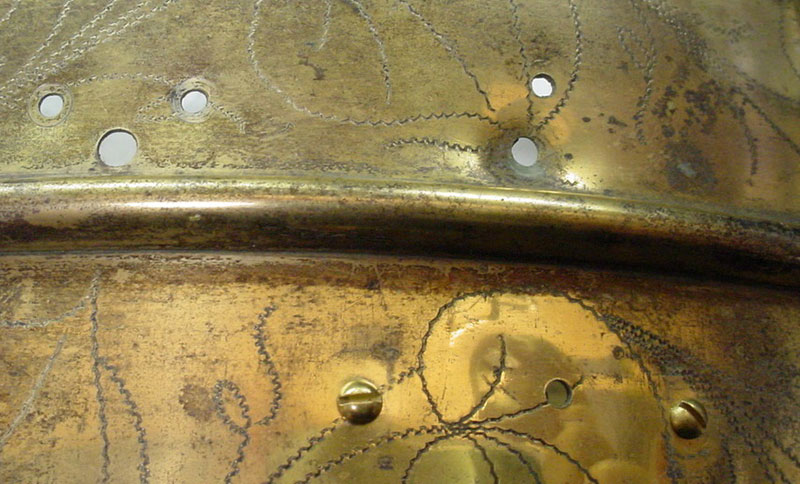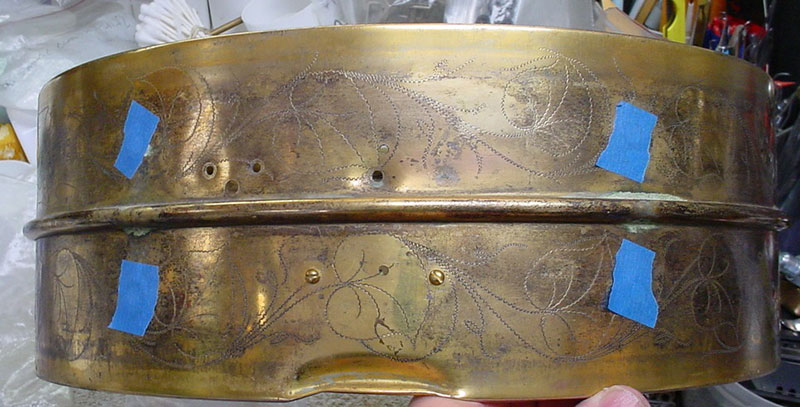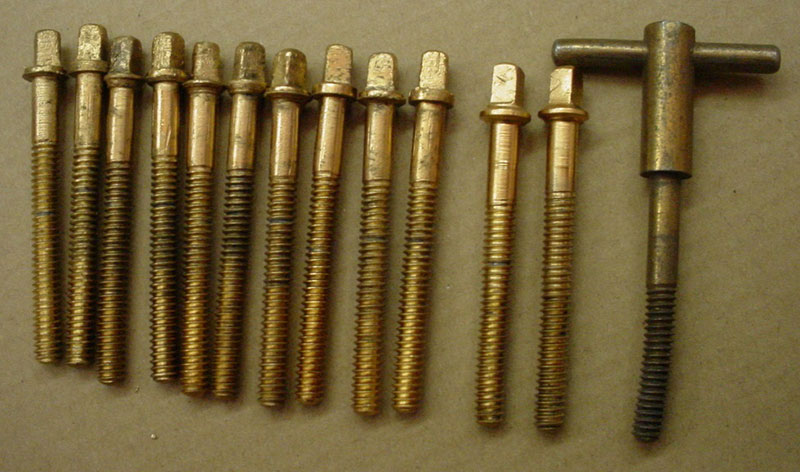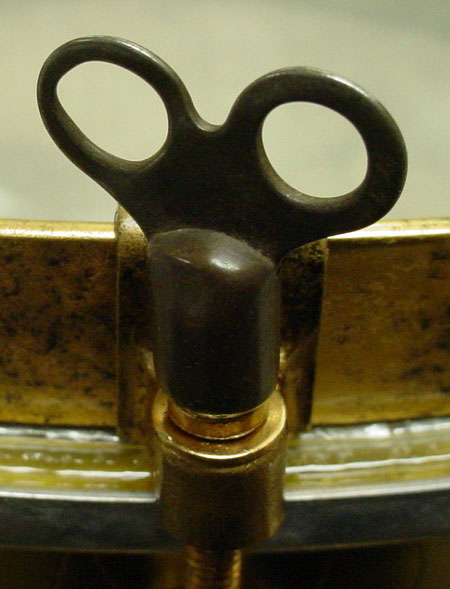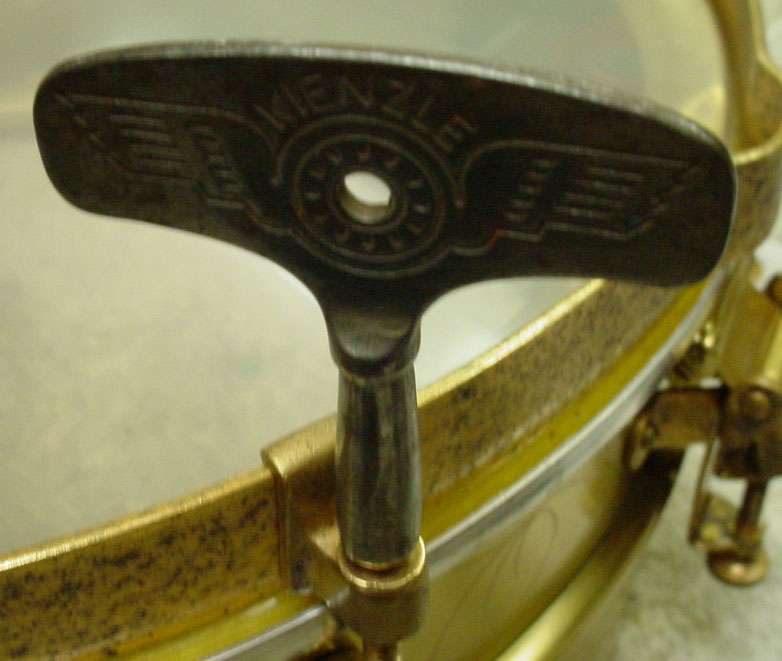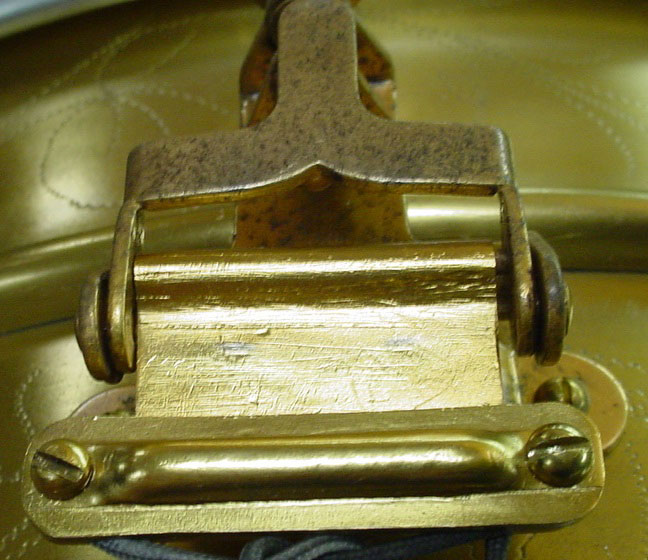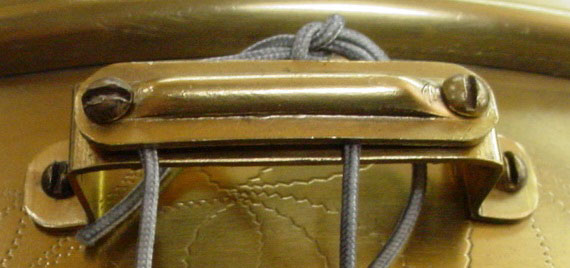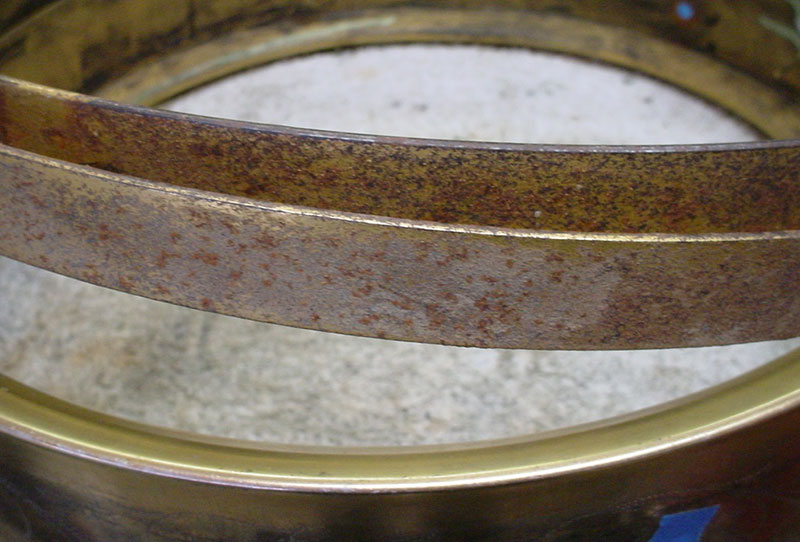Here’s the latest snare drum to enter into the collection. This drum was willed to me by a good friend who had passed away a few years ago. My friend’s wife was ready to sell some of his snare drums and she told me that her husband had specified that I was to be contacted in order to help her sell the drums. The drum in this article was originally found in “as is” condition in an antique store many years ago by my friend’s mother. The drum is in 100 % original factory condition.
Read moreF. Baron snare drum, circa 1930s
F. BARON was a music store located in Paris, which existed in the 30/40 years. Very little information exists, but they created a brand "CONTINENTAL Paris New York", drums and snare drum which are so rare.
Read moreSeimatone Chromatic Snare Drum -@1948
with this snare, only two tuning knobs are necessary to adjust the tension, one by a head ! The internal chromatic system is very complex but works perfectly, and allows you to change tone while playing
Read more1935 Ludwig & Ludwig 6.5 x 14 Gold Sparkle (Flash)/Classic Gold Standard Model
Here’s another snare drum fresh from the 2015 Chicago Vintage Drum Show and now in the “Bun E. Carlos wing” of the Curotto Collection. I got this one from Bun E. Carlos.
Read more1947-50 METJAZZ Snare Drum
Here’s the latest snare drum to enter the collection. I got this drum from Emmanuel Giraudon who owns Oldrums in France (www.oldrums.fr).
Read more1935-36 Ludwig & Ludwig Silver Anniversary Black Beauty
By Mike Curotto
1935-36 LUDWIG & LUDWIG 6.5 x 14 SILVER ANNIVERSARY BLACK BEAUTY
Hi all,
Here’s another snare that I was able to add to the collection...fresh from the 2015 Chicago Vintage Drum Show. I got this drum from Joe Luoma, he had one to spare so we sealed the deal over the phone 3 weeks prior to the Show and culminated the deal at the Show. Thanks goes to Joe for helping me to add another cool and very rare drum to my collection. Joe’s drums are always pristine so this was an easy cleaning.
The SHELL:
The “sparse” later 1930s 10 pt. floral engraving pattern is clean and in good shape. The black nickel is also in good condition with some normal “freckling” that is to be expected on an 80 year old drum. I just gave the shell a minor cleaning with some lemon oil and all is good.
The HARDWARE:
Around 1932 Ludwig changed their Artgold (bright copper plating /gold lacquer) DeLuxe hardware option to Classic Gold (brass plating/ yellow gold lacquer). The Classic Gold on this snare drum was in very good condition and only needed a basic cleaning. The threads on the tension rods needed the most cleaning. One side of one of the tapped Imperial lugs was stripped but my good friend Al Schneider, The Drum Doctor, did his magic with a 12-24 Heli-Coil and as I’ve mentioned before, do not let stripped “Anniversary” lugs be a deal killer, there is a fix, a 12-24 Heli-Coil is the correct fix.
Of-the-era calf heads (note the tone control stamp on the top head) and James Snappi wires rounded out this simple cleaning.
Silver Anniversary Black Beauties are extremely rare, there are only 5 known at this writing and every one is different but I do realize that there is always the possibility that there are others out there. Be sure to weigh-in if you see or hear of another Silver Anniversary Black Beauty out there in vintage drum land.
Here’s a list of the 5 known Silver Anniversary Models:
- 5 x 14 gold plated Standard Model (Joe Luoma Collection)
- 5 x 14 gold plated Super-Ludwig Model (Joe Luoma Collection)
- 6.5 x 14 chrome plated Standard Model (Bun E. Carlos Collection)
- 4. 5 x 14 chrome plated Super-Sensitive Model (Mike Curotto Collection)
- 6.5 x 14 Classic Gold Standard Model (Mike Curotto Collection)
Enjoy!
1934-35 Slingerland Broadcaster
By Mike Curotto
Hi all,
Here's another one cleaned up and entered into the collection. I got this snare drum at the 2011 Chicago Show from our good friend and fellow collector, Mark Cooper of Cooper's Vintage Drums.
1934-35 SLINGERLAND 6.5 x 14 SPARKLING GREEN/ARTGOLD *BROADCASTER MODEL
*The Broadcaster Model was very short-lived so for those of you that may not be familiar with this model here is a short history and background data regarding the Slingerland Broadcaster Model. The following is from Rob Cook's Slingerland Book (first edition): "The Broadcaster was evidently a forerunner of the Radio King, the strainer is a very early Radio King style strainer and the lugs do not have inserts. (The tension rods thread directly into the lugs.) The muffler was the single-pad style Harold R. Dodd muffler." Thanks again to Rob Cook. I have also read that Slingerland was legally forced to discontinue using the word "Broadcaster" (with a "c") as the Fred Gretsch Co. had been using the name "Broadkaster" (with a "k") on their drums way before Slingerland and therefore the court ruled in favor of Gretsch that Slingerland's Broadcaster was too close sounding/looking to Gretsch's Broadkaster.
The Shell: The Sparkling Green wrap was in pretty good shape with very few of those black "cancer" spots that usually show up on these older Green Sparkle drums. I was able to get a few layers of age off of the wrap with my Maguire's cleaning/polishing regime and the Sparkling Green finish came back to life. The solid maple shell interior was also in good shape and only needed a very light cleaning. The cloud badge was tight and weathered the last 75+ years pretty well.
The Hardware: I'll call it Slingerland Artgold but the hardware finish on this snare drum really resembles the Ludwig & Ludwig Classic Gold (brass plating with gold lacquer) finish that L&L used on their early-mid 1930s Black Beauties. There was a lot of Artgold present but an equal amount of age and tarnish. I haven't figured out how to duplicate the Classic Gold finish yet so the decision was to leave the hardware as is and just do a simple cleaning with a light coat of gold lacquer to seal everything to prevent any further tarnishing. The 16 tension rods were not correct so I went to my stash and found the correct tension rods but these had to be brass plated, antiqued and lacquered. Thanks again to Les and Brian Hadnagy of Avenue Plating for the brass plating and antiquing. The threaded snare gates have the letter "A" stamped on the inside (not seen) part of the rim and gates. This is called a "manufacturer's cartouche", thanks to Slingerland expert Dr. Carl Wenk for that information. I'd love to know if those type of markings are under the riveted snare gates, feel free to send photos. The Slingerland Broadcaster engraving on the top rim is pretty faint but it is there. All in all, the "carpet matches the curtains" pretty well on this drum.
Of-the-era calf heads and extension wires rounded out this cleaning/restoration.
Enjoy!
1929 5x14 Ludwig & Ludwig Rose Pearl Standard-Sensitive Model
I love the Rose Pearl description by L&L: "Rose 'Pearl' is a red hot finish for red hot drummers. It has the zipp (sic), and the Pep, and is just what the collegiate chap has been looking for. Rose 'Pearl' looks best with DeLuxe rods....Prepare for that better job by getting a set of new Ludwig 'Pearl' drums.
Read more1925-32 Ludwig & Ludwig 6.5x15 Black Ebonized Inlay Super-Ludwig Band Model
By Mike Curotto
Hi all,
This snare drum was a gift to me from my good friend and fellow drum collector Bun E. Carlos. We had done a couple of big deals at the 2012 and 2013 Chicago Vintage Drum Shows so as a thank you Bun gifted me this drum.
1925-32 LUDWIG & LUDWIG 6.5 x 15 BLACK EBONIZED/INLAY SUPER-LUDWIG BAND MODEL
The Shell:
The Black Ebonized finish (1925-1939) was originally a special order but in later catalogs it was offered at no extra cost. The finish shows its age but is all there and cleaned up nicely with a product called Naphtha. I just learned about this product from a friend who does a lot of custom woodworking. I am happy with the outcome as this product did not harm the finish. The Black Ebonized finish is also high-lighted with two “decorative” faux inlay decals that surround the shell. The solid mahogany shell interior is in good shape and is factory-marked ”BLACK”. The brass oval badge is clean with a tight grommet. There is no tone control, definitely pre-1933.
The Hardware:
The nickel hardware is all original but it definitely needed a good cleaning and polishing. Everything came out great. The Super mechanism works perfectly. The bottom rim has the stamped “Super Ludwig” which puts it after the earlier engraved “Super-Ludwig” models. The original Super wires are intact and work well.
Of-the-era top and bottom calf heads rounded out this restoration. These 6.5 x 15 Super-Ludwig Band Models are classic examples of a great era. Thanks again goes to Bun E. Carlos for gifting me a great drum.
Enjoy!
1932-34 Slingerland 5x14 Artist DuAll Model (“Pulley” Version)
By Mike Curotto
Hi All,
A few years ago I was contacted by drummer/educator Ed Soph who wanted some information about this drum. I told him what I knew and after a few months I was able to purchase the drum from Ed. Over the years I have discovered three versions of the Slingerland DuAll mechanism: 1. A center post very similar to if not a direct copy of the Super-Ludwig center post (usually equipped with a Tone Flange). 2. An interior “pulley” type mechanism instead of a center post (no Tone Flange). 3. No center post and no “pulley” mechanism (no Tone Flange). This snare drum has the “pulley” mechanism
The Shell: Green Sparkle from the 1930s is notorious for having black “cancer” spots. Fortunately this drum is cancer free. The finish had the normal years of accumulated schmutz but everything cleaned up and polished up nicely. The interior of the solid maple shell was very clean with no re-ring separation other than a 2” section, no big deal. The shell has normal bearing edges top (no Tone Flange) and bottom . The cloud badge is very clean with a tight grommet. Lastly, a nice factory pre-assembly artifact was found on the interior of the shell...”Nickle DuAll”.
The Hardware: The nickel hardware was in great shape and was very easy to clean and polish. There were a few errant tension rods but I had the era-correct replacements in my parts stash.
The internal DuAll “pulley” mechanism is clean, well built and looks kind of artsy. The mechanism is smooth, works well but is not as solid as the center pole version that brought on the patent lawsuit by Ludwig & Ludwig. I’ve included interior and exterior photos of this version of the DuAll mechanism. The reader will clearly see the similarities to the already patented L & L Super-Ludwig mechanism of the same era. The manufacturer’s cartouche markings on the snare gates are “L” and “LL”.
The Slingerland Artist DuAll Model was only in production for approximately two years and due to this very limited production run Slingerland DuAlls are extremely rare. As far as my snare drum collection goes, my un-scientific guesstimate based on the number of Slingerland DuAlls I own vs. the number of L & L Super-Ludwigs I own is about 15:1 meaning for every DuAll I own there are 15 Super-Ludwigs that I own. If we look at the more realistic bigger picture out there in the collecting world my guestimate is more like 100:1. That’s just my very un-scientific observation. As always, feel free to weigh-in on the subject as I look forward to your comments and added information.
A nice Frank’s Drum Shop calf batter head, Slingerland slunk head and the original snares rounded out this cleaning/restoration.
Enjoy! Mike Curotto
2003 6.5x13 Craviotto/Steve Maxwell Collection Birch Lake Superior Timeless Timber Model
Hi all,
Here’s a snare drum that I’ve had for a while. A good friend of mine was the original owner and sold the drum to me about 10 years ago at the 2005 Chicago Vintage Drum Show.
This is a very rare, special order Craviotto snare drum that was part of the Steve Maxwell Collection (Steve is the world’s largest Craviotto dealer). Only two were made in 2003; #1 is in my collection and #2 is in Sweden last I heard. The story is that the original owner (and possibly the collector in Sweden) wanted a Craviotto Lake Superior Timeless Timber 700 year old solid birch snare drum in a 6.5 x 13 size. The order was placed with Steve Maxwell. I was told by three very reputable sources, Johnny, Steve Maxwell and Joe Kenny that in the process of bending the planks/boards Johnny broke 26 boards in order to get two perfect shells. Steve Maxwell was kind enough to let me quote the “broken boards story” in his own words: ”The deal with the broken boards was this: It isn't just the fact that it is a 13 that makes it hard, (because Johnny does 13s, 12s and 10s all the time with no issues). The issue was that it is specifically the Timeless Timber that made it almost impossible to bend a 13. The reason is that the Timeless wood is exceedingly hard from being under pressure in the lake for about 100 years. As a result, the 14 was really the smallest diameter that could be rolled without it becoming excessively wasteful due to broken boards.”
2003 6.5x13 CRAVIOTTO/STEVE MAXWELL COLLECTION BIRCH LAKE SUPERIOR TIMELESS TIMBER
The Shell: The solid birch shell has the typical Johnny Craviotto craftsmanship that he is famous for. The interior is signed and dated 2003. After I bought the drum I asked Johnny if he would authorize a new/updated name plate for me. He came through like a champ.
The Hardware: I’m not sure about drum #2 but this drum has nickel plated hardware, die cast rims and a Trick strainer with the Craviotto logo.
The drum has an Evans G1 batter, Craviotto/Remo snare side and Pure Sound 20 strand wires. The drum has a great “pop” to it and is used all the time in my drum studio.
I felt that this very rare Craviotto snare drum should be shared with my friends, fellow collectors and the vintage drum community.
Enjoy! Mike Curotto
1950-55 Leedy & Ludwig 5x14 "Zebra" Broadway Standard
I got this drum from Bun E. Carlos at the 2013 Chicago Vintage Drum Show. Bun E. Carlos had the only two known Leedy & Ludwig Zebra snare drums, a 4 x 14 Broadway New-Era and a 5 x 14 Broadway Standard. He sold me the 5 x 14 Broadway Standard. The drum was previously owned by Mark Cooper of Coopers Vintage Drums and a special thanks goes to Mark for the additional info on this drum. Bun E. also helped me to authenticate the Zebra finish by giving me a few photos of his Leedy & Ludwig “Salesman Sample” floor tom shell that shows the Zebra finish as one of the samples. Bun E. added this: "The wrap was available to the general public. Aside from your drum, and my 5 drums, I've seen only 2 other Zebra drums, a big bass drum and floor tom on EBay a few years back. Only 8 drums, rarer than an original Triumphal!!!!! Haha!!"...? I love Bun E.’s wry sense of humor.
Read more1932-34 Slingerland 6.5x14 Duco DuAll
A very brief history for those that may not know the history of the Ludwig Super vs. Slingerland DuAll battle: Ludwig & Ludwig had the patent (1924) for their parallel (Super-Ludwig) mechanism. Along comes Slingerland with their version of a parallel mechanism that they called the DuAll model. Ludwig felt that Slingerland’s DuAll mechanism was infringing on their Super-Ludwig mechanism so they sued Slingerland and won. The court ordered Slingerland to discontinue their DuAll model and I seem to remember reading that Slingerland had to pay L & L the money that was made on their sales of the DuAll models. DuAlls were in production for less than two years so these snare drums are extremely rare.
Read more1925 Ludwig & Ludwig Triumphal #9
This drum is definitely a 1920s Ludwig & Ludwig gold plated /engraved Triumphal Model. I did notice a few minor differences as compared to my Triumphal... 1. This drum has a 5-petal rose engraving as compared to my drum that has a 6-petal rose engraving... 2. This drum has the “Ludwig Chicago” in the same panel as the P-338 strainer as compared to my drum where the “Ludwig Chicago” is located 2 panels to the left of the strainer. Nothing earth shattering but interesting enough for me to pursue it further, ergo; was this a different engraver than my drum?
Read more1927-32 L&L DeLuxe Super Snare
Here’s another snare drum to enter the collection. I got this drum in May from a very nice gentleman named Mark Hamon. For those of you that are old Not So Modern Drummer subscribers you will recognize Mark as the photographer of all of those great NSMD cover shots. A thank you goes out to Bill Wanser for helping me to date this drum.
Read more1941 Leedy Autographs of the Stars
Here’s a snare drum that I have been looking for since my early days of collecting...thank you Ebay! This one wasn’t cheap but I wanted it so here we are. A little bit of history here in that the date stamp on this drum is 4112 (December 1941)...Pearl Harbor, WWII and The War Powers Act (Dec. 18, 1941) which caused the 10% Law that proved to be a pretty sorrowful era in the history of American made drums. It looks like this snare drum made the cut and was obviously built just before the “10% Law” manufacturing restrictions were enacted.
Read more1929-32 Leedy Broadway Dual (1st Gen)
Here’s a snare drum that I purchased at the 2014 Chicago Show from Brian Drugan of Drugan’s Drums. First generation Leedy Duals are fairly scarce, nothing earth shattering here but this drum did have something cool that I’ve never seen or heard of before.
Read more1939-41 Leedy Broadway Standard "T-Bird" Engraved Snare
This was an easy one but I do have a restoration tip to pass along. This is purely personal but maybe a few restorers out there will find this useful. If you notice on all of my restorations you will see “aged” snare cord. I think that it looks out of place to have brand new white snare cord on an 85 year old drum; functionally it’s no problem, visually it drives me nuts. Here are two tips for you... 1. I use Yamaha snare cord model SNC-10 but before installing the snares I run the cords through a used (blackened) piece of Cape Cod Polishing Cloth, this darkens (antiques) the white cord and in my opinion makes it more realistic looking... 2. I just discovered Puresound makes model MS4 (dark brown brained line). This is what I used on the drum in this article.
Read more1928-30 L&L "Rainbow" Pearl
Hi all,
I just got this 1928-30 5 x 14 Ludwig & Ludwig “Rainbow Pearl”/DeLuxe Standard Model snare drum from my good friend and fellow collector Donn Bennett of Donn Bennett Drum Studios in Belleview, WA. The drum needed no cleaning or restoring. The solid maple shell interior is clean with a tight grommet/badge and the “finish” is very clean. There is no tone control, tone controls show up in the L & L catalog around 1932 hence the 1928-30 dating. The DeLuxe hardware was restored by Adrian Kirchler of AK Drums in Italy. The only thing I added was of-the-era top and bottom Ludwig & Ludwig calf heads and Ludwig & Ludwig Snappi-type wires.
The real story is in the identification of the finish that is on this drum. I’ll try to explain as best as I can but there are definite inconsistencies that I will site along the way. The finish on this drum (and on the only other drum like this that I have ever seen) has been referred to as “Rainbow Pearl”. I have included a comparison photo of both drums. Ludwig & Ludwig never had a cataloged finish called Rainbow Pearl but they did have the Rainbow Outfit but the drums were finished in Lavender Pearl (1928-35). Leedy introduced Rainbow Pearl in 1930 and it has been suggested that the finish on this drum was taken from the “Leedy side” of the building as Leedy and Ludwig & Ludwig were literally built across the way from each other as they were both owned by the C. G. Conn Co. at that time but the Leedy Rainbow Pearl snare that I own does not look at all like the “Rainbow Pearl” drum in this article. I have also included a comparison photo of the Leedy drum and this drum so the reader can see what I am talking about.
Another theory is that this could be a variation of a “run” of 1928-30 Peacock Pearl. More photos are available on page 153 of The Ludwig Book by Rob Cook, this is a nice presentation of Peacock Pearl I and Peacock Pearl II. Please note that at the top of page 153 Rob lists Peacock Pearl version I (1928-30) and Peacock version II (1930-32) but reverses the the order in the photos; the top photos should be labeled Peacock Pearl II and the bottom photos should be labeled Peacock Pearl I and be aware that the drum in the lower left is the “other” Rainbow Pearl drum that I mentioned earlier. Having fun yet, are you still with me? So what are we going to call this finish...Rainbow Pearl, Peacock Pearl I, a variation of Peacock Pearl I, a one-off run of an un-cataloged finish, a one-off special order, frog in a blender, Walt Disney threw up?
No matter what we call it I have come to really enjoy collecting this finish even though, as my good friend John Aldridge says, “that finish is as ugly as home made soap!” As always I welcome your comments, observations, information AND photos if you own a drum like this or if you have seen or heard of another drum like this one.
Enjoy! Mike Curotto
1920s C.G. Conn "Holey"
Hi all,
This one took some serious rescuing. My friend and fellow collector Robert Campbell bought this drum a while back and contacted me for my opinion on what to. My advice (if he wasn’t into the drum for too much money) was to repair, restore and preserve the drum as best as possible. Bob agreed, the following is what took place.
1920s C. G. CONN 5 x 14 SILVER PLATED/GOLD PLATED/ENGRAVED 6 LUG ALL METAL SEPARATE TENSION DRUM
The Shell: The good news is that the shell is silver plated, gold plated and nicely engraved. The bad news is that there were 15 extra holes! Yep, 15 collector-cringing extra holes.
Can you “splain it to me Lucy” why anyone in their right mind would drill 15 extra holes in this special order, gold plated and engraved shell? Extra ventilation, oh of course, how silly of me. The first stop was to get the shell into the golden hands of my welder/machinist Abe Abello of Weld-Tec in Redwood City CA. There were so many holes in this shell that I had to tape off the 17 original holes that were not to be plugged. Abe was able to plug the holes but I explained to Bob that due to the excessive heat needed to do the plugging correctly the silver and gold plating was burnt away in the areas near the extra holes. Enter Les Hagnagy of Avenue Plating in Redwood City CA...less than 50 yards away from Abe. Les tried his best to use a technique whereby he “rolls on” the gold plating just to the affected areas via a “wand” that is hooked up to the gold plating tank. Unfortunately the shell was too far gone from the extensive hole plugging that had to be done so the decision was made to simply re-gold plate the shell. After a nice clear coat the shell was brought back to life. One last interesting oddity was that the bead on the shell looked normal from the outside but on the inside you can see that there was no channel but rather a very small opening, definitely different from the Ludwig & Ludwig/Leedy shells of the same era.
The Hardware: The good news is that the hardware is gold plated. The bad news is that although you could see the gold plating on the steel rims, tension rods, collar hooks, Utility strainer and butt plate... everything was heavily rusted. The 6 brass tube lugs were fine but the gold plating had long since worn away. Les dipped all of the hardware into his cleaning tank and removed the rust but we decided to flash gold plate the hardware as there was too much rust damage. Les clear lacquered the hardware to preserve the gold plating and to at least stave off any future rust. There were two missing tension rods. These were not your normal sized tension rods but instead they were 10-24 threads with very small square heads. I had two copper plated 10-24 T-handle tension rods in my parts stash, that’s a little bit of luck on my part but the real miracle is that Abe was able fabricate two matching tension rods from what I had. I was so amazed that I had to add a photo. The Knobby Gold Leedy T-handle on the right is an example of the two that Abe had to work with, the two tension rods to the left of the T-handle are the fabricated tension rods from Abe.
Tensioning was a bit of a chore as these 10-24 C. G. Conn tension rods had very small heads so I went to my vintage key collection and found a few banjo/clock keys that worked perfectly; one key is for you Bob just in case you ever want to change heads. The Utility strainer and butt plate were quite different as compared to what we would normally see on Leedy drums from the same era (see photos). The steel band rims were in the worst condition. Les was able to remove all of the rust but the “etching” from the rust remained even after the gold plating.
I was glad that Bob wasn’t into the drum for that much money as I would have hated to see this piece of C. G. Conn history just die by the wayside. The real heroes are Abe and Les. I am very fortunate to have them associated with my hobby. Their work continues to amaze me!
Enjoy.
Mike Curotto (Drum Whisperer)













